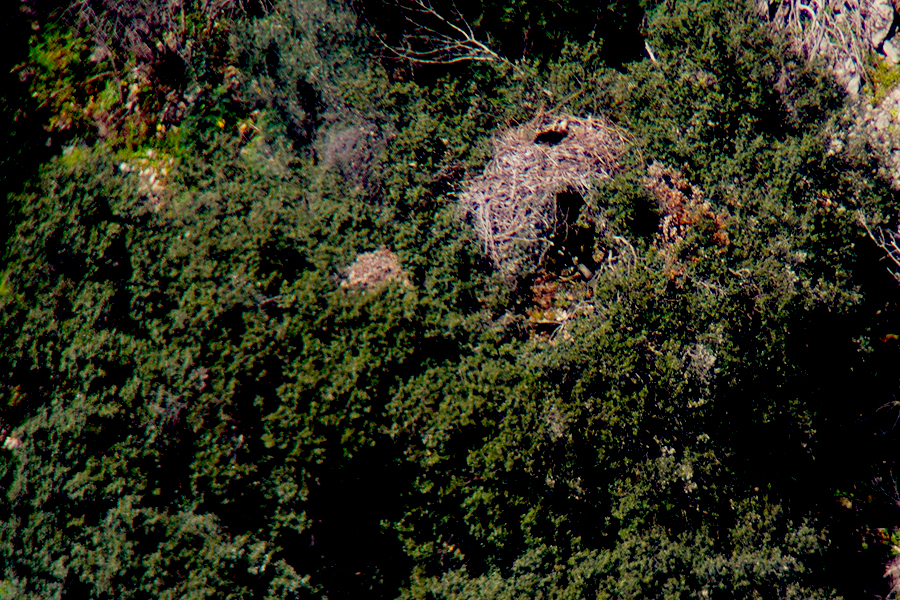Details about the distribution and population size of the cinereous vulture in Armenia have recently been published in the Atlas on Breeding Birds of Armenia, a project led by Armenian NGO Armenian Bird Census TSE.
In Armenia cinereous vultures breed only in Khosrov Forest Nature Reserve (see map and photo), occupying mainly juniper woodland (where they build their nests) from 1,000 to about 2,000 m a.s.l. They are a year-round resident in the country, with some local movements in winter – birds of Khosrov Reserve have been observed flying to Turkey, for example. This species nests in Armenia mainly on Juniper trees.
According to the last estimation, there are 11 to 13 breeding pairs in Armenia. The species decreased from about 50 pairs in the 1980s to 7-8 pairs in the early 2000s, but the trend during last ten years suggests a slight increase, which appears to be a result of supplementary feeding by several conservation organizations.
One of the most important threats in the past – stealing the nestlings for selling, has now decreased, but current threats include direct persecution for trophy and shortage of food – the supplementary food is still not enough, and although there is a positive dynamic in population of some wild ungulates (the Bezoar Goat), the food supply still appears to be insufficient. Other possible threats come from poisoning by (1) use of poison baits; (2) heavy metals at municipal dumps; (3) lead poisoning from hunting ammunition. Recently, a new threat emerged – forest fires. A large fire happened in 2017 in Khosrov Forest Nature Reserve and burnt over 3,000 hectares, including juniper woodland. Since the nestlings of the cinereous vulture fledge in August, the breeding success of entire population might be affected if the fire happens before.
At current the only breeding sites of the species in Armenia are protected in Khosrov Forest Nature Reserve, which also has a status of Emerald Site. The species is included in Red Book of Animals of Armenia (2010) as Endangered.
Proposed conservation measures include: (1) review of the penalties for poaching the species and strengthening enforcement; (2) raise awareness on poaching and poisoning; (3) study the potential poisoning of the species by heavy metals and lead; (4) development of sustainable supplementary feeding stations; (5) strengthening capacity of Khosrov Reserve to detect and fight forest fires; (6) continuous monitoring of the species.
Armenia was one of the countries present in the 12th Conference of Parties of the Convention for Migratory Species (CMS) in Manila, where the vulture Multi-species Action Plan – a strategic blueprint for the conservation of 15 species of wold worlds in Eurasia and Africa, co-coordinated by the VCF- was unanimously endorsed by all signatories.
The VCF is engaging withy the Armenian government and conservation NGOs in the country towards an adequate implementation of the Vulture conservation actions identified.
Photo: Bruno Berthémy/VCF & Armenian Bird Census TSE



